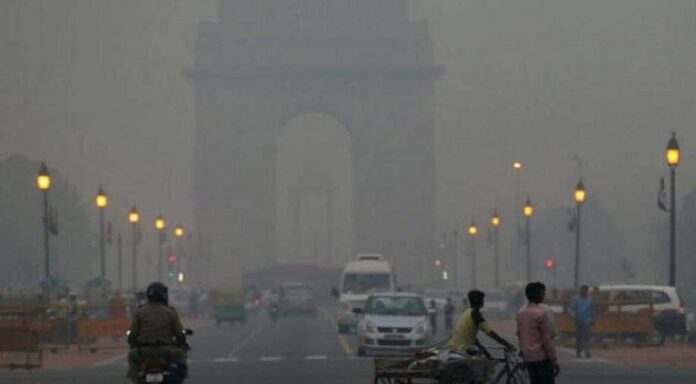The Delhi Air Quality Index (AQI) dropped from 359 on Tuesday evening to 370 on Wednesday morning, remaining in the “very poor” category. The national capital’s air quality has fallen into this category for the fifth day in a row.
Many areas of Delhi, including Anand Vihar, Bawana, and Rohini, now have “severe” AQI readings, according to PTI.
According to information obtained from the Central Pollution Control Board (CPCB), Mumbai’s AQI was 168 on Wednesday morning.
This is classified as “moderate.” This week, Haryana’s air quality suffered as well; on Tuesday, the air quality in Jind was deemed “severe.”
The Indian cricket board has stated that there won’t be any fireworks during the World Cup matches in Delhi and Mumbai due to the declining quality of the air. They claim that fireworks “can add to the pollution level.”
This occurred on the same day that the Bombay High Court began suo motu proceedings after noting the deteriorating air quality in Mumbai.
Delhi
Environment Minister Gopal Rai of Delhi stated yesterday that the administration is keeping an eye on every part of the pollution situation and that the required actions will be done.
Prior to today, the city’s 24-hour average Air Quality Index (AQI) was at its highest point this season, 359.
The Center’s Air Quality Early Warning System for Delhi indicates that the city’s air quality will likely stay “very poor” for a few more days.
Mumbai
The recording station in Mulund, where the AQI is 235, has the lowest air quality in the city out of the 20 stations in the city; it is followed by Sion (217), Colaba, and Kandivali East, where the AQI is 204, according to PTI.
The overall Tuesday AQI score in Mumbai was a “moderate” 172, with Bandra Kurla Complex reaching an alarming high of 260, according to data from the Central Pollution Control Board (CPCB).
Haryana
In the midst of the state’s continuous paddy harvesting, “poor” or “very poor” air quality was reported in several other Haryana towns. The CPCB reported yesterday that Rohtak, Karnal, Kaithal, Bhiwani, and Bahadurgarh were classified as “very poor.”
The AQI monitoring chart classifies an AQI as follows: 0–50 is considered “good,” 51–100 as “satisfactory,” 101–200 as “moderate,” 201–300 as “poor,” 301–400 as “very poor,” and any AQI above 400 as “severe.”
































